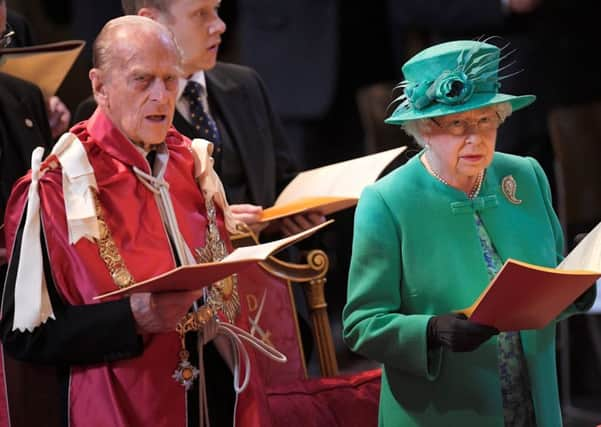Silly or not, our honours system is 100 year old


The empire had yet to emerge from the agony of the Great War when the king proposed a new set of honours for those who had served their country outside the armed forces. What’s more, he decreed, the new Order of the British Empire should be open to women and, in some circumstances, foreigners.
The empire itself sank into the sunset long ago but the honours system it inspired lives on, despite occasional rejection and ridicule. And yesterday, the king’s granddaughter, the present Queen, attended a service at St Paul’s to mark its centenary.
Advertisement
Hide AdAdvertisement
Hide AdThe choice of venue was not a coincidence: its crypt, where Wellington and Nelson are buried, houses the chapel for the Order. It was dedicated after the Second World War, when the cathedral’s survival through the Blitz stood as a symbol of the British spirit.
Nearly 2,000 hororees took their places in the pews behind the Queen, from Knights and Dames to those made commanders, officers and members of the Order.
They included former the BBC weatherman Michael Fish MBE, the broadcaster Dame Esther Rantzen and the political cartoonist Gerald Scarfe CBE.
The anti-establishment Mr Scarfe, however, was deferring to no-one. Asked why he had chosen attend the service, he said: “I don’t know, I’ve got to that point in life where I think, ‘well, sod it’.”
Advertisement
Hide AdAdvertisement
Hide AdLooking around at other former recipients leaving St Paul’s, he was asked if he felt one of them. “I feel about their age,” he said, “but no, I’m just very impressed by it all.”
The list of appointees to the Order runs into tens of thousands, but there have been around 300 who have turned down an honour. Among these, the Yorkshire playwright Alan Bennett holds the unusual distinction of declining twice - a CBE in 1988 and a knighthood eight years later.
The former Beatle John Lennon accepted an MBE in 1965 but famously returned it after four years, with a letter that read: “I am returning this MBE in protest against Britain’s involvement in the Nigeria-Biafra thing, against our support of America in Vietnam, and against Cold Turkey slipping down the charts.”
The comedian John Cleese turned down a CBE in 1996, reportedly calling the idea “silly”.
Advertisement
Hide AdAdvertisement
Hide AdIn 2012, the former Labour Chancellor, Alistair Darling, said Whitehall’s honours committees should stop handing out medals to the “usual “suspects” of civil servants and top military officers.
At yesterday’s service, the Dean of St Paul’s, the Very Reverend Dr David Ison, was at pains to highlight some of the good causes and areas of endeavour that have been recognised by the Order.
“Hedgehog conservation, chocolate making, sport and health, industry and the arts, charity and volunteering - we celebrate an amazing hundred years of honourable service,” he said.
The Sheffield heptathlete Jessica Ennis-Hill is among Yorkshire’s most recent double honorees, having accepted a CBE in 2013 and been appointed Dame Commander this year.